The kitchen is often called the heart of the home, yet when it comes to decoration, it is one of the most overlooked spaces. While living rooms and bedrooms usually take the spotlight, kitchens can also benefit from carefully chosen artwork. Adding wall art in the kitchen is more than a decorative decision; it’s a way to bring personality, warmth, and style into a functional environment. This guide explores practical strategies, creative kitchen wall art decor ideas, and useful considerations for displaying art where food, people, and design intersect.
Most kitchens are dominated by cabinets, appliances, and worktops, leaving little space for expression. Yet even small patches of wall can be transformed with the right paintings in the kitchen. Unlike other rooms, kitchens have unique challenges—moisture, grease, and heat—making the selection of materials and placement more important. Choosing framed works with protective glass, durable finishes like oil painting kitchen pieces, or laminated prints ensures the art stays intact over time.
Treating the kitchen as a creative canvas allows art to thrive alongside function.
Not all art belongs in every kitchen. Large-scale pieces might overwhelm smaller spaces, while tiny prints may look lost on wide, open walls. For modern spaces, contemporary wall art for kitchen settings, such as abstract compositions or minimalist graphics, create an elegant balance with clean cabinetry. Traditional kitchens often pair well with still life or landscape works. Playful designs—like food-inspired prints—can bring charm without feeling gimmicky.
Matching art type to kitchen style creates harmony and enhances the room’s personality.
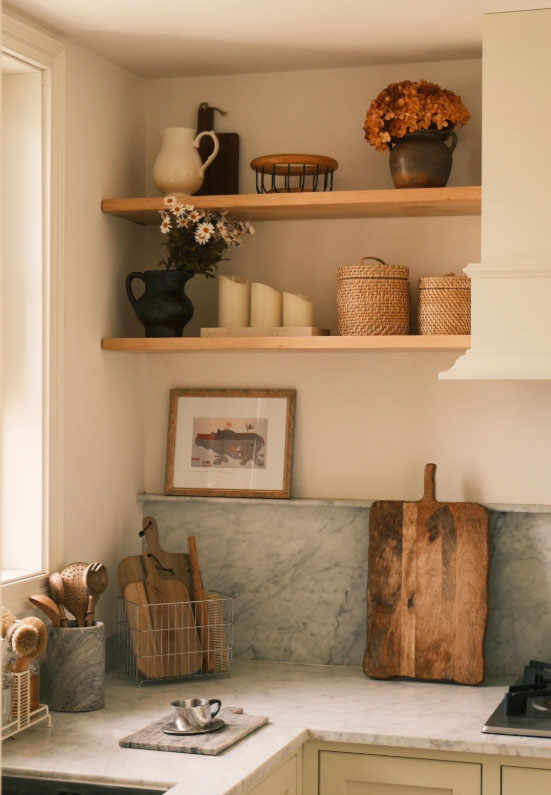
The kitchen is a natural home for experimentation. Abstract art kitchen arrangements bring energy through shape, color, and rhythm, without competing with utensils or dishes. Pieces with vibrant tones can inject life into neutral cabinets, while monochrome abstracts work well in already colorful kitchens. The versatility of abstract art ensures it adapts to both rustic and high-tech environments.
Abstract and contemporary art transform kitchens into lively, modern spaces without visual clutter.
Placement is as important as style. Art should be visible yet safe from direct heat or steam. Walls above breakfast nooks, open shelves, or near entryways make excellent spots. Over the sink or counter backsplash, smaller works can act as focal points. Large horizontal pieces balance wide open walls, while vertical works emphasize narrow strips between cabinets.
Thoughtful placement ensures artwork enhances the kitchen without risking damage.
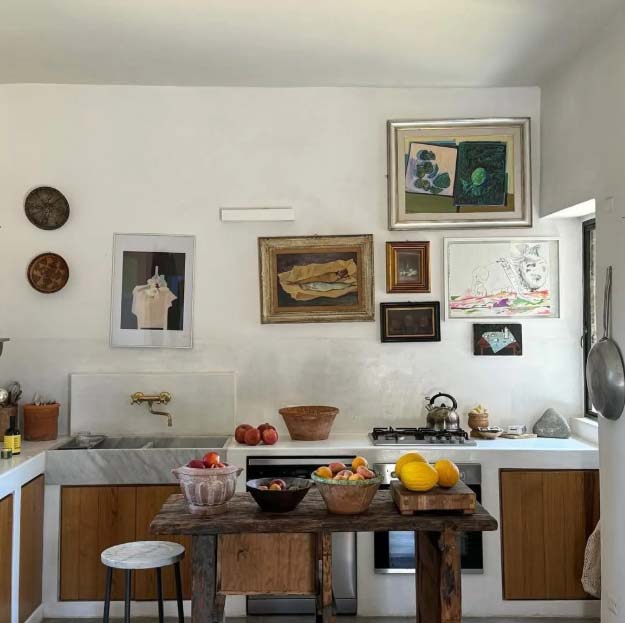
Framed prints, oil painting kitchen works, and photography each behave differently in humid conditions. Oil and acrylic paintings are durable choices for kitchens, while watercolors and delicate drawings should be displayed only if fully sealed. Metal and ceramic wall hangings are also practical alternatives, adding texture and resilience. Mixed-medium displays—such as wood-framed paintings beside metal wall art—add dimension and interest.
Choosing resilient materials keeps art looking fresh and ensures long-term enjoyment.
Every kitchen benefits from a central feature. A single large painting can define the dining nook, while a gallery wall above open counter space adds character. Framed typography prints or food-inspired posters can also become informal conversation starters. Layering art with functional items—such as spice shelves or cutting boards—creates a balance of beauty and utility.
Strategic focal points turn kitchens from purely functional areas into inspiring interiors.
Good lighting not only helps cooking but also highlights kitchen wall art decor ideas. Adjustable spotlights can draw attention to a featured piece, while under-cabinet lighting naturally illuminates smaller works. Avoid placing art in direct sunlight to prevent fading. LED lighting is ideal since it produces minimal heat and conserves energy.
Proper lighting elevates both the art and the atmosphere of the kitchen.
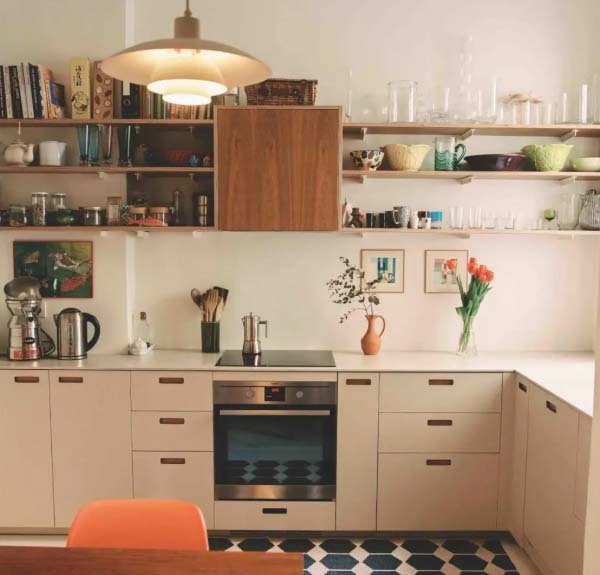
Unlike permanent installations, kitchen art can change with the seasons. Small framed prints or canvases can be swapped to reflect moods, holidays, or themes. This approach keeps the space fresh without major redecorating. Magnetic frames on refrigerators, clipboards on walls, or floating shelves allow easy rotation.
Rotating artwork introduces flexibility and keeps the kitchen lively year-round.
Not all kitchen art must be traditional framed pieces. Hand-painted plates, vintage signage, or decorative tiles function as both décor and utility. Combining framed wall art in the kitchen with practical elements bridges aesthetics and daily use. Even chalkboard walls can serve as evolving artworks when paired with handwritten recipes or sketches.
Blending art with functional items personalizes the kitchen while preserving practicality.
Kitchens expose art to more wear than other rooms. Regular dusting, proper framing, and protective coatings safeguard pieces. Avoid hanging valuable works too close to stoves or sinks. If investing in original works, consider protective varnishes or glass enclosures. For low-maintenance solutions, prints, reproductions, or durable abstract canvases are excellent.
Maintaining artwork in kitchens ensures longevity and preserves its visual appeal.
Art in the kitchen doesn’t need to stop at walls. Decorative rugs, patterned curtains, or statement ceramics extend artistic energy throughout the space. Coordinating wall art with textiles or dinnerware creates cohesion. This broader approach makes kitchens feel curated rather than simply decorated.
Expanding art beyond walls creates a unified and welcoming environment.
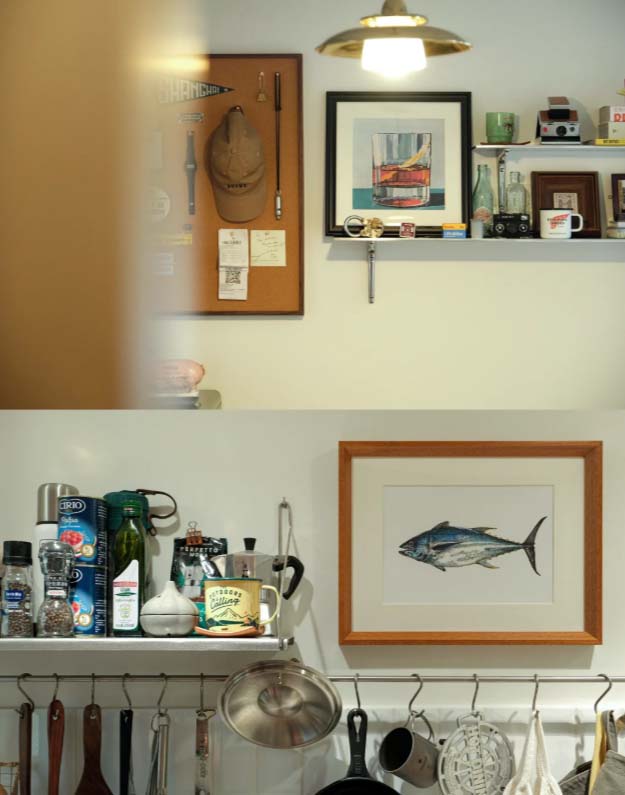
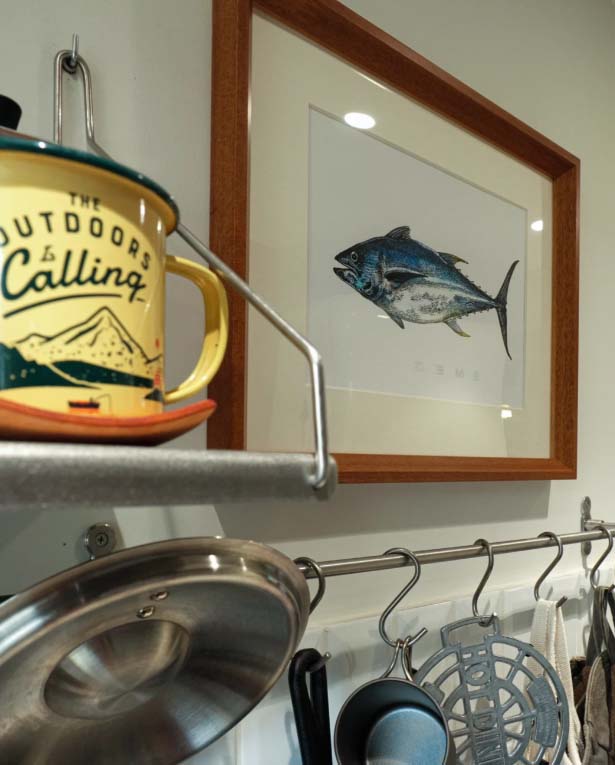
Adding paintings in the kitchen is more than decoration—it’s about making everyday routines inspiring. From abstract art kitchen choices to contemporary wall art for kitchen accents, there are endless ways to express creativity. By choosing durable materials, mindful placement, and thoughtful lighting, anyone can elevate their kitchen into a truly personal space.
When integrated with care, kitchen wall art turns daily cooking into a more inspiring experience.
Hi, I’m Philo, a Chinese artist passionate about blending traditional Asian art with contemporary expressions. Through Artphiloso, my artist website, I share my journey and creations—from figurative painting and figure painting to floral oil painting and painting on landscape. You'll also find ideas for home decorating with paint and more.
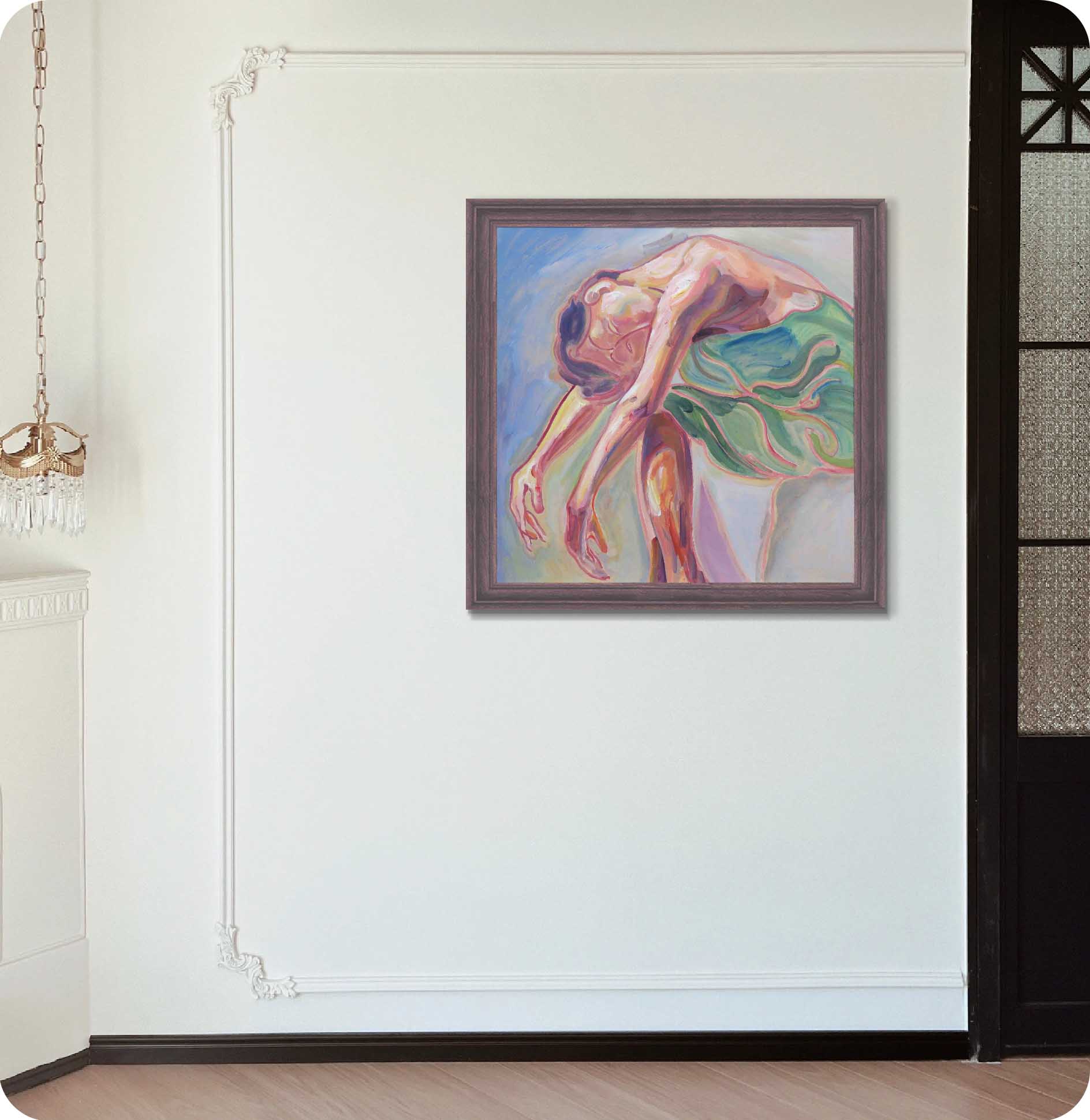
About Placement and Display
Where is the best place to hang wall art in the kitchen?
Safe locations include walls above breakfast nooks, spaces near entryways, or the backsplash area, provided works are properly sealed.
Can I display art above cabinets?
Yes. The space above cabinets is perfect for framed prints, leaning canvases, or small sculptures that add vertical interest.
Is the refrigerator a good place for art?
Yes. Using magnetic frames or clips turns the refrigerator into a rotating gallery for prints, photos, or small artworks.
Can I create a focal point with art?
Yes. Hanging a large piece above the sink or dining nook provides a central focus, especially in kitchens without windows.
About Materials and Maintenance
What materials are most durable for kitchen art?
Oil paintings, acrylics, and ceramics withstand humidity better than watercolors or delicate papers.
How do I protect art from grease and steam?
Frame with glass or acrylic covers, hang away from direct stove areas, and clean surfaces regularly.
Can I rotate artwork seasonally in the kitchen?
Yes. Floating shelves, clipboards, or magnetic frames make it easy to switch artworks and keep the kitchen feeling fresh.
About Lighting and Atmosphere
Does lighting matter for kitchen wall art?
Yes. Adjustable spotlights, under-cabinet lights, or LED fixtures highlight art without producing excess heat.
What kind of atmosphere can art create in the kitchen?
Art can make the kitchen feel more personal, calm, or vibrant, depending on choices like landscapes for serenity or abstracts for energy.
About Hanging Standards
How high should I hang art in the kitchen?
Follow gallery standards: the center of the piece should sit around 57–60 inches (145–152 cm) from the floor.
What tools do I need to hang art safely?
Use hooks, D-rings, or wires, and make sure heavy works are anchored into studs for safety.
About Expanding the Concept of Kitchen Art
Can I blend art with functional items?
Yes. Decorative plates, vintage signage, chalkboards, and patterned tiles combine beauty with daily use.
Can art extend beyond the walls?
Absolutely. Rugs, curtains, or ceramics can be coordinated with wall art to create a unified kitchen design.
